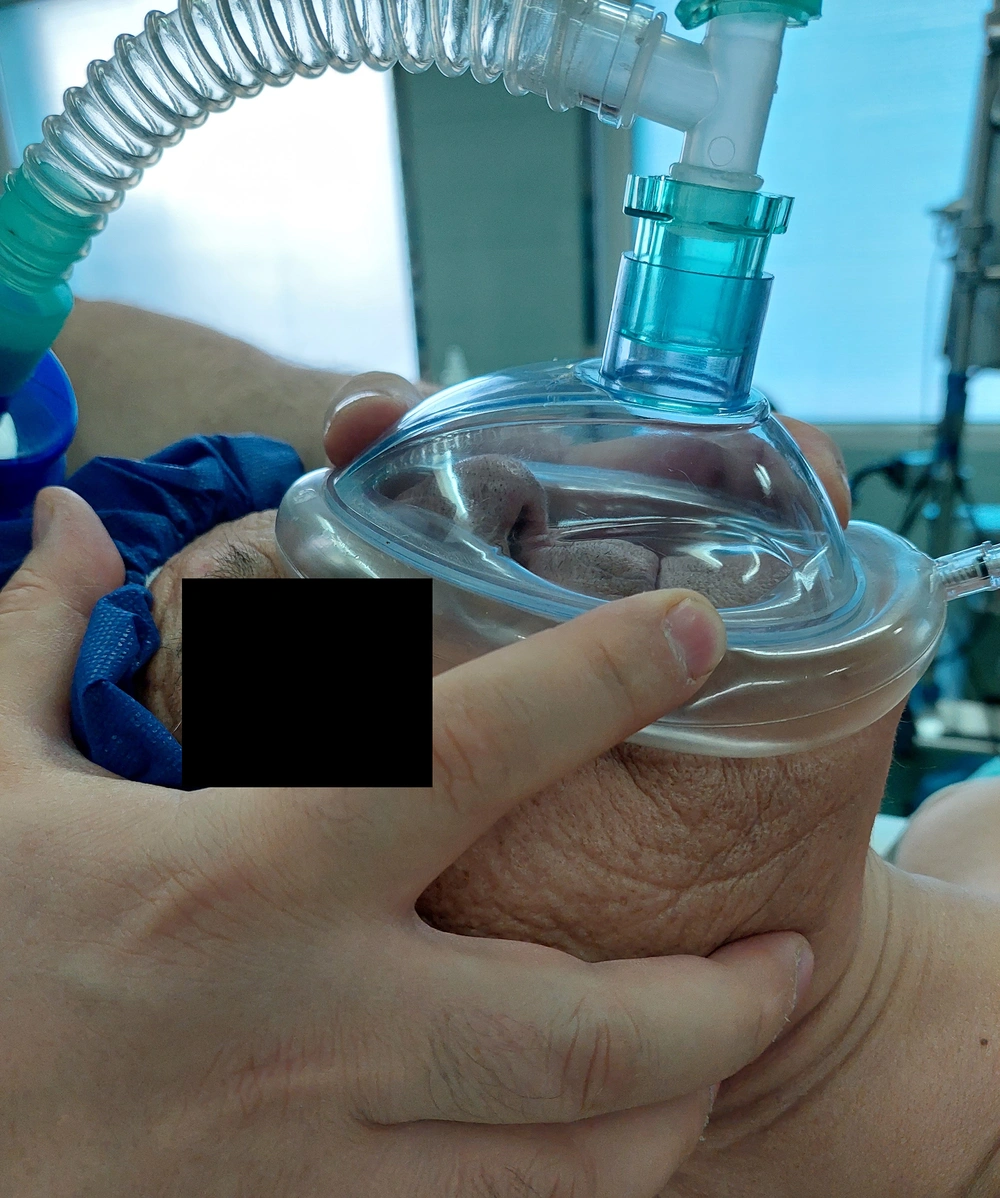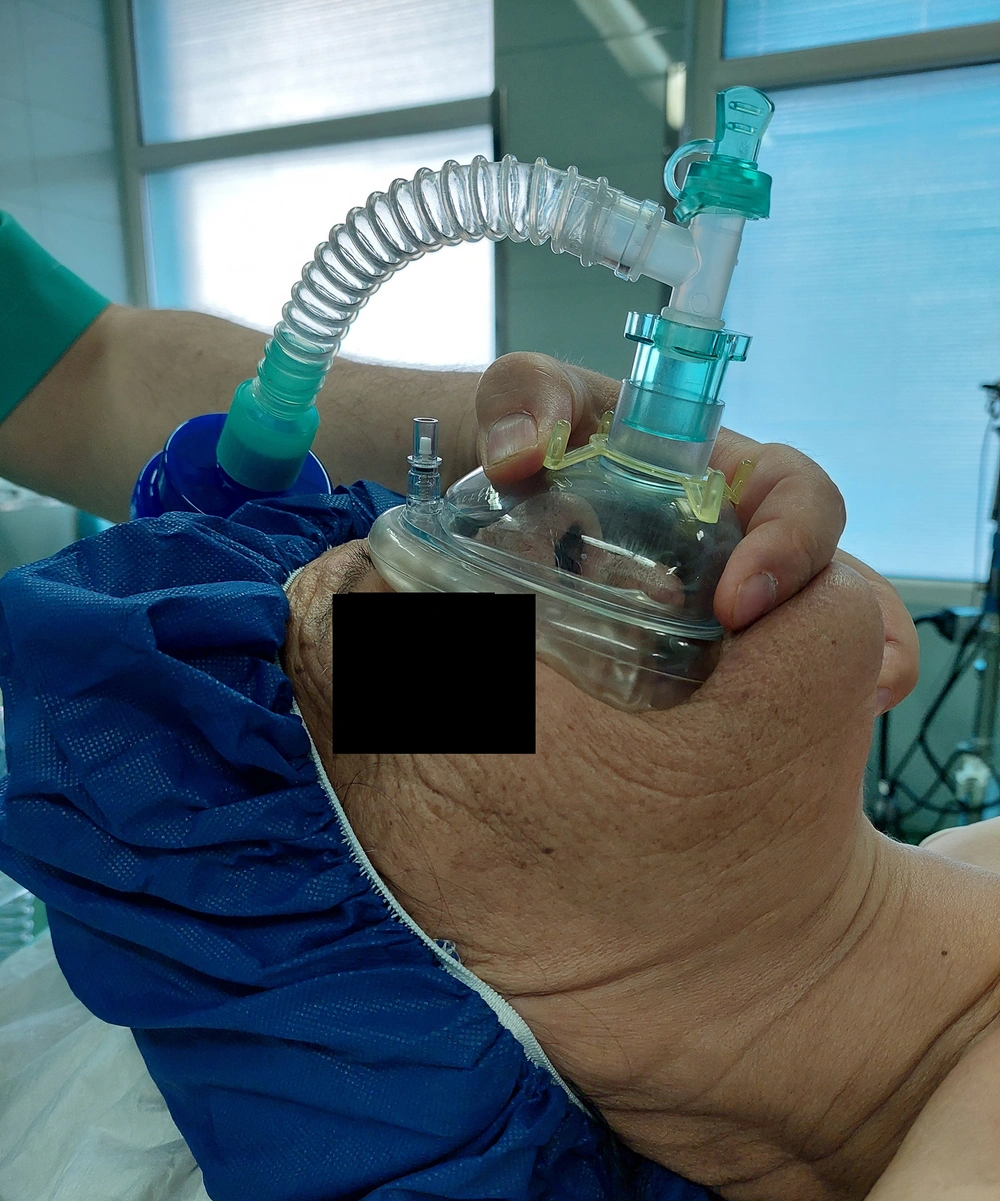Dear Editor,
In elderly and edentulous patients, ventilation with the mask is one of the serious challenges due to the inadequate seal with air leaks, which is mainly due to the shrinking of the gums and facial tissues; this phenomenon makes it difficult to keep a mask without a leak (Figure 1). Various methods have been proposed to facilitate the maintenance of the mask in these patients, including nasal ventilation, leaving dentures in, putting gauze inside the mouth in the buccal area or outside the mouth on the cheeks, or bilateral jaw thrust maneuver by one person with pulling of cheek around the mask and ventilation by another person (1-4).
A method introduced by Racine is the lower lip face mask placement. In this method, the mask was placed in the lower lip position by repositioning the caudal end of the mask above the lower lip, while maintaining the head in extension (5). The problem that exists in the above-mentioned methods, including the lower lip placement method, is the need to use two hands to hold the mask and, as a result, the need for the help of another person to squeeze the bag.
In the way that the authors of this letter and probably many other anesthesiologists use, the caudal part of the cushion mask is placed completely inside the open mouth instead of being placed below or above the lower lip (Figure 2). This method which can be called “intraoral mask position," has several advantages; the first one is while filling the mouth to prevent air leakage, ventilation is done only through the nose. Additionally, due to placing a part of the mask’s cushion inside the mouth, the mask stays more stable, while sealing better, and there is no need for an oral airway. However, the most interesting point is that this method can be easily employed with one hand, and, as a result, a one-person ventilation mask is possible. Holding the mask with one hand is especially important in cardiopulmonary resuscitation and emergency cases where the maximum efficiency of individuals is very important.
To properly perform this method, it is necessary to consider that the type of mask must be an inflatable air cushion mask. A completely clean and preferably sterile mask should also be used, and because the mask is placed higher in the face to prevent leaking from the top, a mask one or two sizes smaller is utilized.


